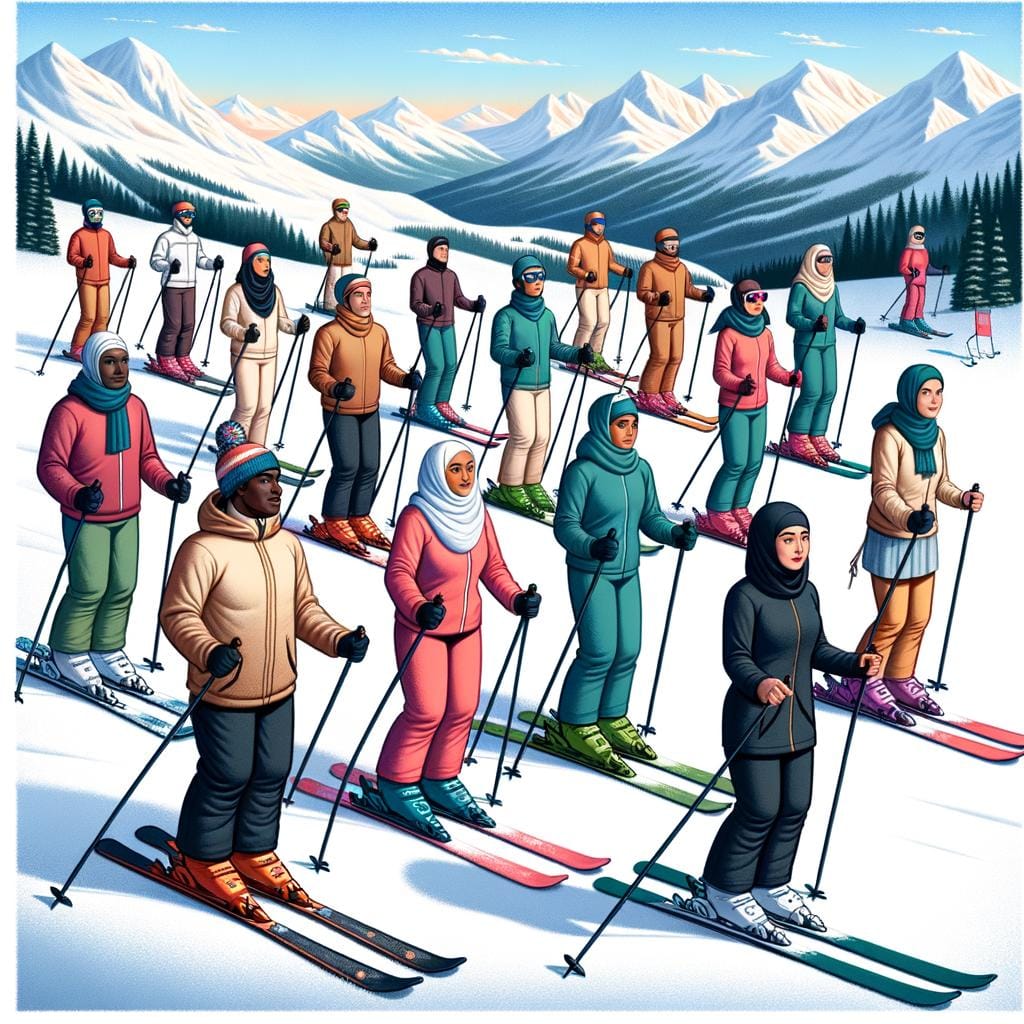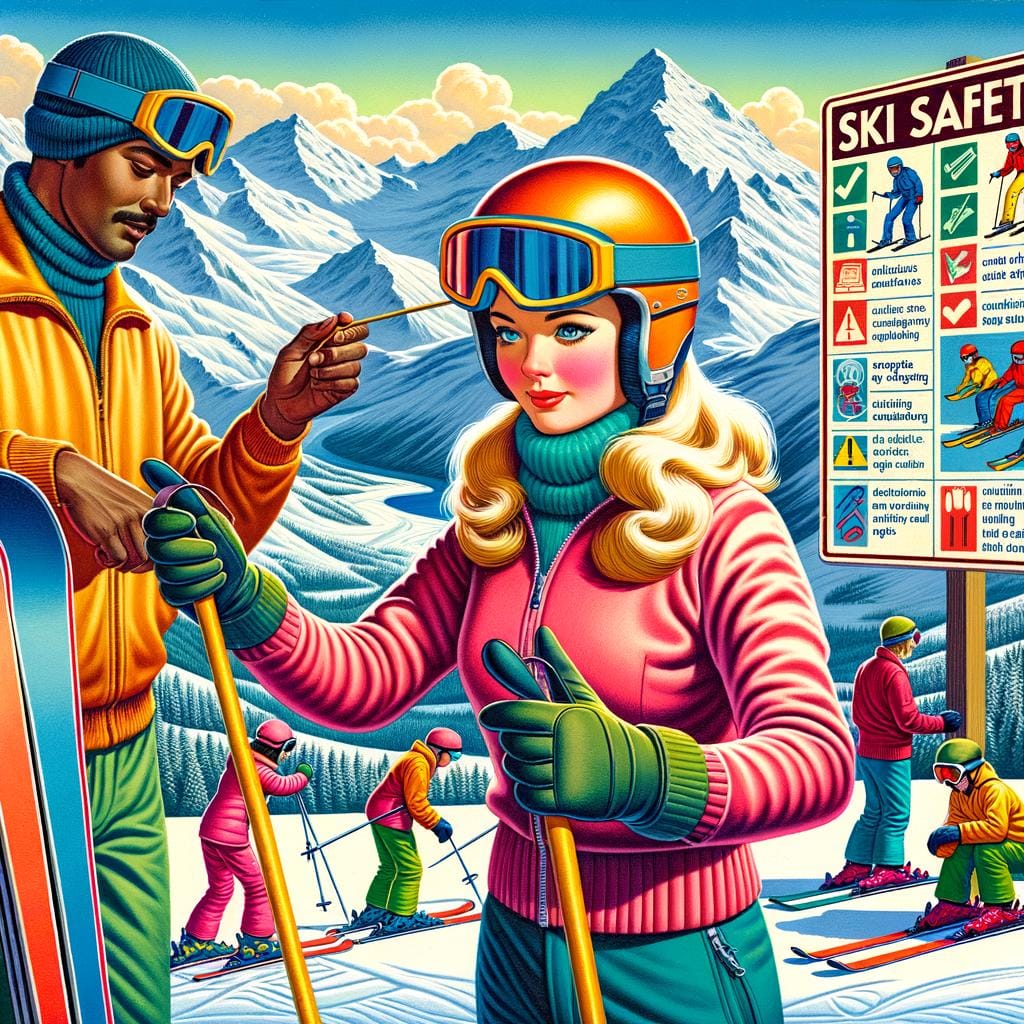Ski training is a crucial aspect of preparing for a successful and safe skiing experience on the slopes. Whether you are a beginner or an advanced skier, incorporating proper training into your routine can greatly enhance your skills and prevent injuries. Understanding the importance of ski training is essential in ensuring that you have the necessary tools and techniques to conquer the mountain with confidence.
By engaging in ski training, individuals can improve their balance, strength, agility, and overall performance on the snow. These training sessions not only help skiers refine their technique but also build endurance and stamina for long days on the mountain. From mastering turns to navigating different terrains, ski training offers a range of benefits that can elevate your skiing abilities to new heights.
There are various types of ski training available, including on-snow and off-snow options. Both modes of training serve different purposes and cater to different skill levels. By understanding the differences between these two types of training, skiers can tailor their practices to suit their specific needs and goals. Additionally, equipping oneself with the essential gear for ski training, such as skis, boots, poles, and other equipment, is crucial for maximizing performance and safety during training sessions.
Benefits of Ski Training
Ski training is not only beneficial for improving one’s skills on the slopes but also plays a crucial role in preventing injuries. By engaging in regular ski training, individuals can enhance their balance, agility, and strength, which are essential for navigating the challenging terrain of ski slopes. Additionally, ski training helps skiers develop proper techniques and form, reducing the risk of accidents and injuries while skiing.
One of the key benefits of ski training is that it allows skiers to build muscle strength and endurance in preparation for a day on the slopes. Through targeted exercises and drills, individuals can strengthen their core, legs, and other important muscle groups used in skiing. This not only enhances performance but also helps prevent fatigue-related injuries by ensuring that muscles are adequately prepared for the physical demands of skiing.
Moreover, ski training can significantly improve overall skiing proficiency by focusing on specific skills such as carving turns, mastering moguls, or improving speed control. Whether it’s through on-snow or off-snow training sessions, skiers have the opportunity to refine their technique and boost their confidence on various types of terrain. By consistently practicing ski-specific exercises and drills, individuals can elevate their performance levels and make the most of their time on the mountain.
| Benefits of Ski Training | Improve Skills and Prevent Injuries on the Slopes |
|---|---|
| Enhances balance, agility, and strength | Reduces risk of accidents and injuries |
| Builds muscle strength and endurance | Improves overall skiing proficiency |
Types of Ski Training
Ski training is an essential component for skiers of all levels to improve their skills, enhance performance, and prevent injuries on the slopes. When it comes to ski training, there are two main types: on-snow training and off-snow training.
On-snow training involves practicing skiing techniques directly on the snow, either at a ski resort or in specialized training facilities. This type of training allows skiers to work on their balance, control, speed, and overall technique in a real-life skiing environment.
Off-snow training, on the other hand, refers to exercises and drills that skiers can do indoors or outdoors without being on the slopes. This type of training is crucial for building strength, endurance, flexibility, and overall fitness levels that are necessary for skiing.
Off-snow training can include activities such as weight lifting, cardio workouts, yoga, agility drills, balance exercises, and more. These off-snow activities not only help improve skiing performance but also reduce the risk of injuries by preparing the body for the physical demands of skiing.
It is important for skiers to incorporate both on-snow and off-snow training into their regular routine to achieve optimal results. While on-snow training allows skiers to work on specific ski techniques in a realistic setting, off-snow training helps build a strong foundation of strength and fitness that translates into better performance on the slopes.
By combining these two types of ski training effectively and consistently, skiers can enhance their skills, prevent injuries, and elevate their overall skiing experience.
| Types of Ski Training | On-Snow vs Off-Snow Training |
|---|---|
| On-Snow Training | Practicing skiing techniques directly on snow at ski resorts or specialized facilities. |
| Off-Snow Training | Exercises such as weightlifting, cardio workouts, yoga etc. performed away from slopes. |
Essential Equipment for Ski Training
When it comes to ski training, having the right equipment is essential to ensure a successful and effective training session. The proper gear not only enhances performance but also helps prevent injuries on the slopes. Here are some of the key pieces of equipment that skiers need for their ski training sessions:
- Skis: The most important piece of equipment for any skier, there are different types of skis designed for various skiing disciplines such as alpine, freestyle, and cross-country. Choosing the right skis based on your skill level and intended use is crucial for a productive training session.
- Boots: Ski boots play a critical role in transferring power from your body to your skis. It’s essential to find boots that fit properly and offer sufficient support to prevent discomfort and maximize control while skiing.
- Poles: Ski poles provide balance, assistance with turns, and propulsion on flat terrain. Make sure to choose poles that are the correct length based on your height and skiing style.
Having the appropriate gear not only improves performance but also ensures safety during ski training sessions. Skiers should invest in high-quality equipment that is well-maintained to avoid accidents on the mountain. Remembering to check gear regularly for wear and tear can help prevent mishaps while on the slopes.
Ski training not only helps improve skills but also enhances overall fitness levels necessary for a successful day on the mountain. With the right equipment at hand, skiers can focus on refining their techniques and preparing themselves for an exciting skiing experience. So, be sure to gear up properly before hitting the slopes for your next ski training session.
Ski Training Techniques
Drills for Ski Training
One of the most effective ways to improve your skiing skills is through practice drills. These drills are designed to target specific aspects of your technique, such as balance, edge control, and speed. One common drill is the “hockey stop,” which helps skiers work on their stopping abilities and edge control.
Another popular drill is the “bump jump,” which focuses on agility and quick turns. By incorporating these drills into your ski training routine, you can enhance your performance on the slopes.
Exercises for Ski Training
In addition to practice drills, incorporating specific exercises into your ski training regimen can also help improve your overall performance. Strength training exercises targeting the legs, core, and upper body are essential for building the necessary muscle power and endurance required for skiing.
Exercises like squats, lunges, planks, and deadlifts can help strengthen key muscle groups used in skiing. Additionally, cardiovascular exercises such as running, cycling, or using a stair climber can improve endurance levels needed for long days on the mountain.
Importance of Consistent Practice
Consistency is key when it comes to ski training techniques. Regularly practicing drills and exercises will not only enhance your skills but also build muscle memory that will help you react quickly while on the slopes.
It is recommended to incorporate ski-specific workouts into your weekly routine during both the off-season and leading up to your ski trip. By dedicating time to ski training throughout the year, you can ensure you are prepared physically and mentally for a successful skiing experience.
Training Programs for Skiers
Ski training is a crucial component of preparing for the slopes, regardless of your skill level. When it comes to ski training programs, there are options available for skiers at every stage – from beginners looking to master the basics to seasoned veterans striving to enhance their technique and performance on the mountain.
Whether you’re just starting out or seeking to take your skiing abilities to the next level, structured training programs tailored to different proficiency levels can help you progress and achieve your goals.
Beginner Level
For novice skiers who are new to the sport, beginner-level training programs focus on fundamental skills such as balance, turning, stopping, and navigating different terrain types. These programs typically include basic drills and exercises that gradually build confidence and gradually introduce beginners to more challenging aspects of skiing. Instructors often emphasize proper technique and body positioning to ensure safety while learning the ropes on the slopes.
Intermediate Level
Intermediate skiers who have mastered the basics may benefit from more advanced training programs designed to refine their skills and expand their capabilities on varied terrain. Training at this level typically incorporates techniques for carving, moguls, off-piste skiing, and other specialized areas based on individual goals. It also focuses on developing speed control, edge control, and dynamic turns while encouraging skiers to push their limits in a controlled environment with expert guidance.
Advanced Level
Skilled skiers at an advanced level can benefit from specialized training programs that challenge them both physically and mentally to reach peak performance on the mountain. Programs for advanced skiers often include high-intensity drills, race simulation exercises, technical workshops, and off-snow conditioning sessions aimed at honing specific skills like racing gates or tackling steep terrain. These programs are designed for experienced skiers looking to elevate their performance through advanced techniques and tactics tailored to their individual needs.
Nutrition and Hydration Tips for Ski Training
Ski training requires more than just physical practice and drills; it also involves proper nutrition and hydration to fuel the body for optimal performance on the slopes. Whether you are a beginner skier looking to build endurance or an advanced skier aiming to push your limits, paying attention to what you eat and drink is essential for success. Here are some nutrition and hydration tips to keep in mind:
- Stay hydrated: Dehydration can affect your performance and increase the risk of injury while skiing. Make sure to drink plenty of water before, during, and after your ski training sessions.
- Carbohydrates for energy: Fuel your body with carbohydrates such as whole grains, fruits, and vegetables to provide the energy needed for skiing. Consider consuming a balanced meal rich in carbs before hitting the slopes.
- Protein for muscle recovery: After a rigorous ski training session, focus on consuming protein-rich foods like lean meats, poultry, fish, and legumes to help repair and build muscle tissue.
In addition to proper hydration and nutrition, timing is key when it comes to fueling your body for ski training. It’s essential to eat snacks or meals at the right times to optimize performance and prevent fatigue on the mountain. Planning ahead and packing nutrient-dense snacks like nuts, trail mix, fruit bars, or protein shakes can help sustain energy levels during your ski training sessions.
Remember that each skier’s nutritional needs may vary based on factors such as age, weight, gender, and activity level. Consulting with a sports nutritionist or dietitian can provide personalized recommendations for your ski training journey.
Safety Measures in Ski Training
When it comes to ski training, safety should always be a top priority. Precautions must be taken to prevent accidents and ensure that skiers can enjoy their time on the mountain without unnecessary risks. One of the most important safety measures in ski training is to always wear the appropriate gear.
This includes a helmet, goggles, gloves, and layers of clothing to stay warm and protected from the elements. Additionally, making sure that all equipment is in good condition and properly fitted can help prevent avoidable injuries.
Another crucial safety measure in ski training is to be aware of your surroundings at all times. Skiers must adhere to designated trails and obey all posted signs and warnings on the slopes. It is also essential to practice proper skiing etiquette, such as giving right of way to others and being mindful of your speed, especially when skiing in crowded areas. Being alert and responsive while on the mountain can greatly reduce the risk of collisions and other accidents.
In addition to wearing the right gear and paying attention to your surroundings, it is also important for skiers to know their limits. Pushing yourself beyond your skill level can lead to dangerous situations on the slopes. It is vital to listen to your body and take breaks when needed during ski training sessions. Knowing when to stop practicing certain techniques or drills can help prevent injuries and ensure a successful ski training experience in the long run.
Resources for Ski Training
In conclusion, ski training is an essential component for skiers of all levels to improve their skills, enhance performance, and prevent injuries on the slopes. Whether you are a beginner looking to master the basics or an advanced skier aiming to push your limits, training programs tailored to your level can significantly impact your skiing experience.
The variety of resources available for ski training, including guides, instructors, and online tutorials, offer valuable support and guidance in honing your abilities on the mountain.
Investing in ski training not only helps you become a more confident and capable skier but also ensures that you have a safe and enjoyable time on the slopes. By incorporating both on-snow and off-snow training into your regimen, you can work on different aspects of your skiing technique and physical conditioning. Additionally, practicing drills and exercises specifically designed for ski training can help you build strength, agility, balance, and endurance necessary for navigating varying terrains and conditions.
As you embark on your ski training journey, remember that proper nutrition and hydration play a crucial role in fueling your body for optimal performance. Eating well-balanced meals rich in carbohydrates, proteins, healthy fats, vitamins, and minerals can provide you with the energy needed to sustain long days on the mountain.
Hydrating adequately before, during, and after ski training sessions is equally important to prevent dehydration and maintain peak physical function. Ultimately, by prioritizing safety measures like wearing appropriate gear, respecting mountain etiquette and guidelines, staying aware of your surroundings at all times during ski training sessions will ensure a positive experience while pursuing your passion for skiing.
Frequently Asked Questions
How Do You Train Your Body for Skiing?
Training your body for skiing involves a combination of cardiovascular exercises, strength training, and flexibility work. Cardio helps build endurance, while strength training, focusing on legs, core, and back muscles, improves stability on the slopes. Flexibility exercises like yoga or stretching are crucial for preventing injuries and enhancing range of motion.
How Do I Strengthen My Legs for Skiing?
Strengthening your legs for skiing is essential to improve performance and reduce the risk of injuries. Incorporate exercises like squats, lunges, leg presses, and calf raises into your workout routine. Don’t forget to work on both quadriceps and hamstring muscles to maintain balance and stability while skiing.
How Do You Train for Skiing Without Snow?
To train for skiing without snow, focus on specific exercises that mimic the movements and demands of skiing. Incorporate activities like cycling, hiking, jogging, or using a ski-specific simulator to work on endurance, leg strength, and overall conditioning. Additionally, cross-training with activities like swimming or rowing can help maintain fitness levels during the offseason.

An avid outdoor enthusiast, writer, and environmental advocate who has spent over two decades exploring the world’s most breathtaking landscapes. With a background in environmental science and a passion for adventure, Frances combines her love for nature with her talent for storytelling to inspire others to embark on their own outdoor journeys.





